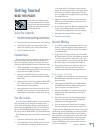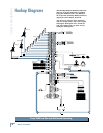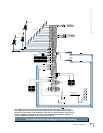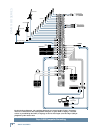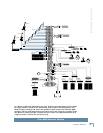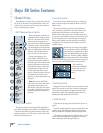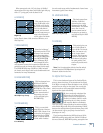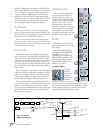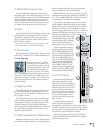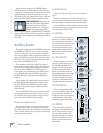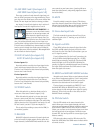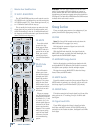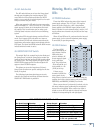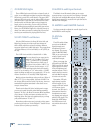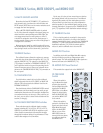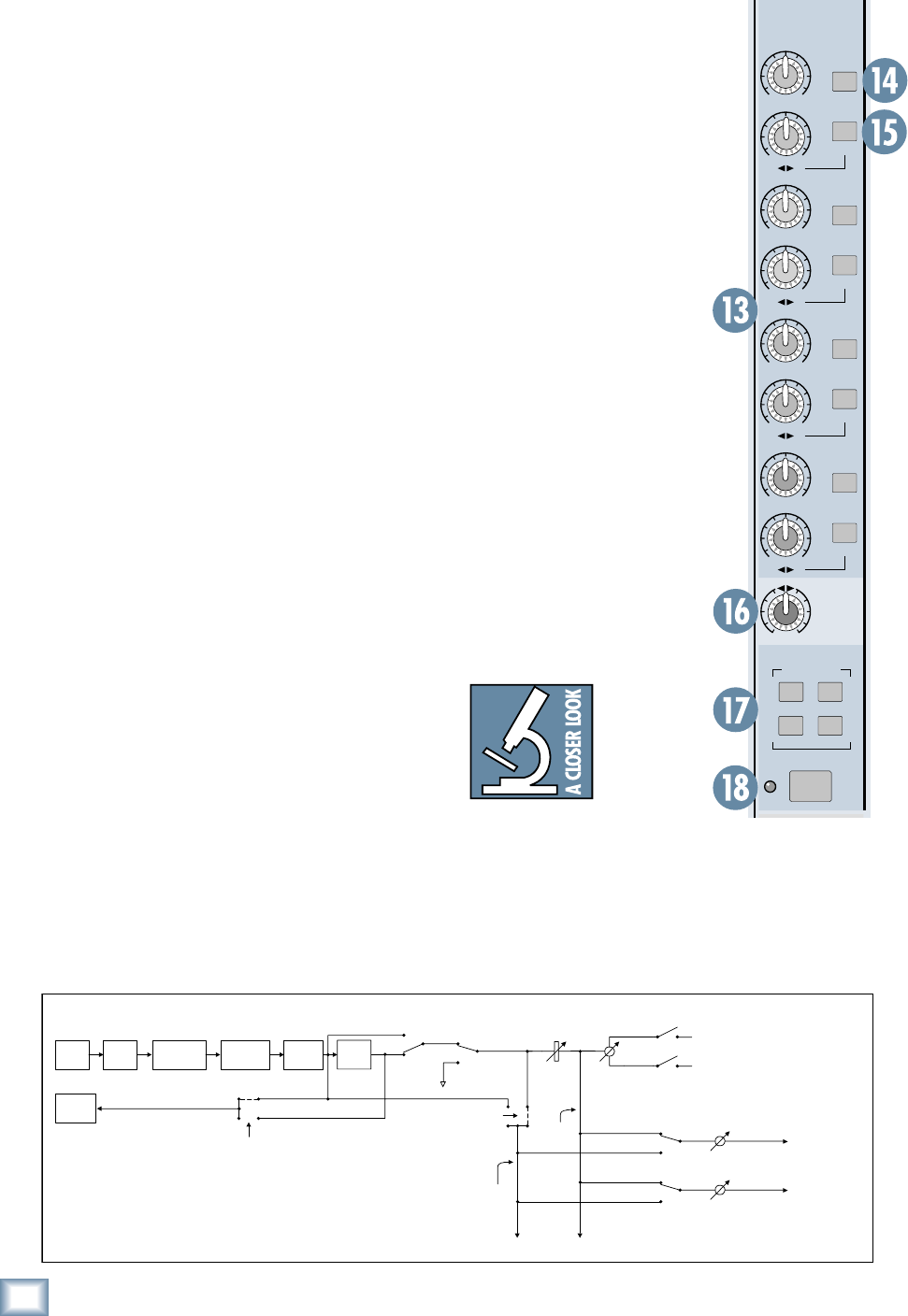
12
ONYX 80 SERIES
ONYX 80 SERIES
OO
MAX
OO
MAX
OO
MAX
OO
MAX
OO
MAX
OO
MAX
OO
MAX
OO
MAX
MUTE GROUP
AUX
SEND
1
2
PAN
PRE
STEREO
RL
3
4
PRE
STEREO
RL
5
6
PRE
STEREO
RL
7
8
PRE
STEREO
RL
RL
MUTE
1
3
2
4
400 Hz to 8 kHz on the mono channels,
and HIGH shelv-
ing at 12 kHz. “Shelving” means that the circuitry boosts
or cuts all frequencies past the specifi ed frequency. For
example, rotating the LOW EQ knob 15 dB to the right
boosts bass frequencies below 80 Hz and
continuing on
down to the lowest note you ever heard. “Peaking” means
that the frequencies around the center frequency are
less affected by the EQ the further away they are.
13. AUX Sends
These tap a portion of each channel’s signal out to
either an effects processor or for stage monitoring. The
AUX Send levels are controlled by the channel’s AUX 1-8
knobs, and by the AUX MASTER 1-8 knobs [37].
These are more than just effects and monitor sends.
They can be used to create stereo in-ear monitor mixes,
generate separate mixes for recording, for another zone,
or “mix-minuses” for broadcast.
14. PRE Switch
This switch is used to select whether the Aux send
signal is pre-fader or post-fader. When the PRE switch
is up, the Aux send signal is post-fader, which is usually
used when you are using the Aux send to go to an effects
processor. This way, when fader changes are made, the
“wet” signal going to the effects processor moves up and
down along with the “dry” signal, maintaining a balance
between them.
When the PRE switch is pushed in, the Aux send signal
is pre-fader, which is usually used for sending to monitors
(stage monitor wedges or IEM, in-ear monitor systems).
This way, when changes are made to fader levels in the
front-of-house mix, it doesn’t affect the monitor mix.
The pre-fader Aux Sends are post-EQ by default. How-
ever, an internal jumper is provided on each channel to
change the pre-fader Aux Sends to pre-EQ, if desired.
This requires some soldering skills, so contact Tech Sup-
port for information on how to access the pre/post-EQ
jumpers for the Aux Sends.
15. STEREO Switch
When this switch is pushed in,
the associated odd/even pair of
Aux sends become a stereo send
and pan control, respectively. For
example, if you press the STEREO
switch for Aux 1 and 2, the Aux 1
knob controls the signal level to
both Aux 1 and Aux 2, and the Aux
2 knob controls the panning of the
signal between Aux 1 and 2. This
is useful for providing a stereo mix
for IEM (in-ear monitor) systems.
16. PAN
PAN adjusts the amount of chan-
nel signal sent to the left versus the
right outputs
.
With the PAN knob hard left,
the signal feeds the MAIN LEFT
(and GROUP 1, 3, 5, and 7,
depending on the setting of the
GROUP ASSIGN switches). With
the knob
hard right, the signal
feeds the MAIN RIGHT (and
GROUP 2, 4, 6, and 8).
Constant Loudness
The Onyx
80 Series
PAN control
employs a
design called
“Constant
Loudness.” If you have a channel
panned hard left (or right) and then pan to the center,
the signal is attenuated 3 dB to maintain the same ap-
parent loudness. Otherwise, it would make the sound
appear much louder when panned center.
GAIN POLARITY INSERTLOW CUT EQ
EQ
IN/OUT
MUTE
FADER
PAN
ASSIGN
PRE/POST
PRE/POST
AUX SEND 1
KNOB
"POST"
SIGNAL
"PRE" SIGNAL
TO AUX SENDS 3-8
INTERNAL JUMPER
INTERNAL
JUMPER
Aux "Pre vs. Post"
Signal Flow Diagram
POST-
MUTE
PRE-EQ
PRE-EQ
POST-EQ
INPUT
DIRECT
OUT
TO AUX SEND 1
BUS
AUX SEND 2
KNOB
TO AUX SEND 2
BUS




